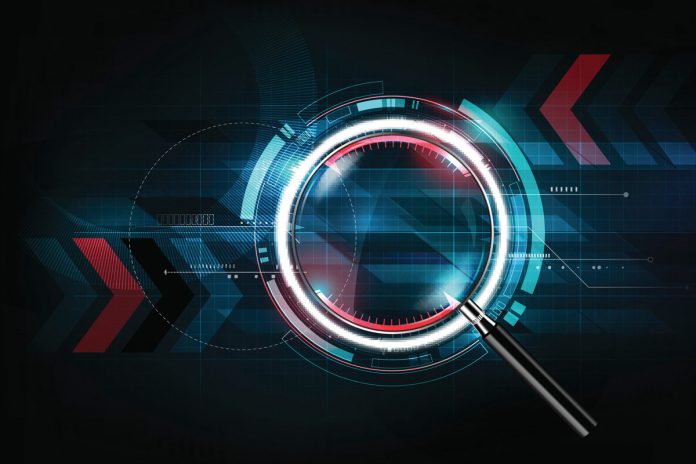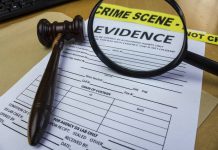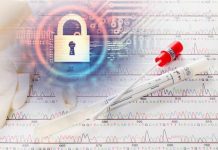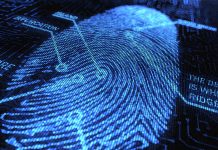This article is written by Charul Mishra, a student pursuing B.A.LLB from Symbiosis Law School, Hyderabad. In this article, the author has dealt with an introduction to Forensic science and its utilization in the Criminal Justice System.
Table of Contents
Introduction
Due to the development in the criminal justice system, there has been an extraordinary diffusion in crime investigation techniques as far as the scientific infusion is concerned, as observed in the previous decade. The use of scientific tools and techniques in crime detection by police officials, identification of alleged criminals /offenders helps in establishing a crucial link between the judiciary and police force. Further, they take account of these physical pieces of evidence that are consistent and determine the accuracy of the innocence or guilt of the criminal/offender.
Forensic science is a discipline that functions within the parameters of the legal system and may have a remarkable contribution in supporting justice in crime investigation and other serious violations. Its purpose is to provide guidance to those conducting criminal investigations through the recognition and retrieval of evidence at crime scenes and accurate information on which they can rely on the resolution of criminal and civil disputes. Crime includes murder, rape, accident-related incidents, undisclosed persons, displaced persons, fraud-related cases, and forgery.
In India, statements and witnesses are used as a source of evidence, and those who are found guilty are then prosecuted. Forensic science services could, therefore, be the most important crime-fighting instrument for law enforcement.
Forensic Science and its scope
Forensic Science is described as “applying science to statutes enacted in criminal justice by law enforcement agencies.” Forensic Science is concerned with the application of scientific concepts and methods of the various science disciplines to legal matters. The proof analysis consists of multiple areas such as sociology, physics, forensic chemistry and biology, DNA profiling, computer science, and engineering. Physics, for example, is used to understand the blueprint of a blood dispersion; biochemistry seeks to strengthen the basis for an unverified suspect, and chemistry helps us to find out the chemical composition of different drugs.
Forensic science is an integration of nearly all scientific skills and acts as a critical and qualified tool that makes the dispensation of justice possible in criminal, civil, legislative, and social contexts. It helps to describe all of science’s applications in addressing the questions of legal significance. Forensic science is now a highly advanced research method used in criminal and civil investigations, able to address critical questions and an integral part of the criminal justice system. It includes all renowned techniques such as the analysis of fingerprints, DNA analysis, ballistics and explosives, firearms, culture, etc.
Parts of Forensic Science
Forensic Odontology
Forensic dentistry assists in identifying victims when the body is left in an unrecognizable state. This is accomplished by examining their teeth, mouth alignment and overall mouth structure. Forensic dentists or odontologists aid with a person’s comparative identification by analysing the teeth’s growth and anatomy, and any restorative dental corrections such as a filling. This is also used for bite mark analysis in criminal investigations.
Forensic Toxicology
Chemicals legally recognized as having the abuse potential are considered controlled substances. This includes illegal drugs like cocaine or heroin and prescription medications like oxycodone. Detecting and recognizing these controlled drugs play a vital role in helping law enforcement authorities combat opioid addiction and drug-based violence.
Forensic Toxicology includes biological sample processing in order to test for the existence of toxins and medications. This forensic science division is of vital importance in road accidents, poisoning, sexual assault etc. The toxicology reports provide crucial details on the existence of an incidence-related drug present in a person. This also determines whether the amount of substances absorbed by a therapeutic dose is normal or exceeds the acceptable standard. Because new types of drugs are being created every day, this branch of forensic science is continually changing and demands an up to date approach.
Forensic Anthropology
This deals with the examination of damaged human remains or skeletons to assess age, height, gender and ethnicity. It also helps by recognizing and evaluating injuries, if any, to determine the time elapsed since the time of death. The research offers useful leads on victim identification, especially in cases where the bodies are beyond recognition.
Impression and Pattern Evidence
Evidence for impression is the evidence produced when two objects come into contact with sufficient force to produce an “impression.” This can include a two-dimensional impression such as a fingerprint, or a three-dimensional impression such as a bullet mark. Examination of pattern proof requires finding and evaluating additional details within a given perception. When used in conjunction, impression and pattern evidence can help in establishing vital links between a suspect/tool to a crime scene.
Forensic Pathology and Medicolegal Death Investigation
Forensic pathology helps with the examination of the corpse in determining the cause of death. Forensic medicine requires gathering and examining medical samples in order to deduce facts which are admissible in court. Identification of wound patterns, for example, can aid in identifying the weapons used to inflict the wound. Furthermore, forensic pathologists may investigate weapons or other projectiles in deaths involving exit and entry wounds. For this purpose, a forensic pathologist may draw critical inferences as to whether death is natural, criminal or accidental.
Trace Evidence
Examples of trace evidence include substances such as fibres, dirt, hair, bullet residue, wood, and pollen. It derives its name from its ability to be easily transferable in the course of a crime between objects, people or climate. Trace evidence also plays a crucial role in linking the perpetrator to the victim. For example, a soil sample taken from a victim’s shoes may provide vital clues as to the location of the crime and thus help identify the perpetrator.
Cyber Forensics
Cyber Forensics includes the study of electronic data and physical storage devices such as pen drives, hard disks, etc. Its main purpose is to recognize, store, retrieve, evaluate, and present facts and opinions on digital content. This is mostly used to prosecute cybercrimes, as well as civil events. Cyber Forensics has been in use in criminal law since the mid-1980s, with some notable cases being the murder case of Sharon Lopatka, the conviction of Dennis Rader, Dr Conrad Murray – personal physician of Michael Jackson, and Joseph E. Duncan III.
Ballistics
Ballistics is a technical forensic science dealing with motion, actions, movement, angular motion, and projectile impact, such as bullets, rockets, missiles, bombs, etc. Ballistics were used mainly in criminal investigations. Examination of the bullet found at a crime scene, for example, could show the type of gun used to fire it, and whether it was involved with any other crime in the past. In fact, the ballistic specifics are recorded in a vast database that the law enforcement agencies around the globe can access.
Role of Forensic Science in Criminal Investigations
Forensic science is an important feature of the criminal justice system. Essentially, it deals with exploring the scientific and physical clues collected from the crime scene. Forensic science describes the suspect’s distinctive nature which committed the crime. The evidence clearly points out the essence of the crime that was committed. The circumstantial evidence even refers to the time of the occurrence. The forensic evidence indicates where the crime is located. The forensic investigation even follows the offender’s process.
Finally, the motive behind the crime comes to a close. Forensic analysts recreate the peculiarity of the suspect and the victim. A forensic scientist’s roles and obligations in a criminal case are important as it includes carefully analysing the evidence with sufficient diligence so that it is not manipulated. For example, forensic pathologists are skilled in performing autopsies to determine the cause of death. An autopsy assists in assessing the cause and manner of death by analysing body fluids and tissues. Forensic scientists analyze physical evidence collected from the crime scene (fingerprints, blood, hair, etc.) to identify suspects. Forensic experts also use resources for image manipulation to search for long-term offenders who are absconding from the law. This method helps them to digitally age an image and understand how the aged person will feel.
In investigating a criminal act, a large array of forensic science and forensic resources are involved. During the entire criminal investigation, the evidence is collected from the scene of the crime or by a person who is an eye witness to the complete event, which is further analysed in a forensic lab and then the findings are reported to the judge. Every crime investigation is unique in nature and poses its own challenges in each instance. Forensic science plays a significant role in the criminal justice system by offering scientifically based knowledge through the study of the physical proof, the identification of the perpetrator by personal clues such as fingerprints, footprints, blood drops or ears, cell phones or any other devices, automobiles and arms.
Importance of Forensic Science in Law
The legal system clearly understands the role that forensic evidence plays in criminal trials. This is because there isn’t much room for bias or discrimination while using scientific techniques and methods. This is why profiling of DNA and a variety of other forensic evidence are commonly recognized in courts around the world. Interestingly, the Chinese (650 A.D.) dates back to the first forensic technique ever used that involved finger and palm print recognition.
Forensic testimony is commonly used across the world for both convicting and exonerating suspects. Thus, forensic science labs have been mushrooming across the globe over the past few decades. In addition, Special Acts have been passed to enhance the delivery of forensic services in the US, Canada and Australia. This ensures greater certainty in the detection of crimes, and consequently, rates of conviction may increase. Such Acts place great emphasis on timely and high-quality crime scene management.
The forensic proof is often used for both defendants who have been convicted and acquitted. As a consequence, the number of crime laboratories throughout the world has increased significantly over the last couple of decades. Special acts have been implemented in the United States, Canada, Great Britain and Australia in order to improve the forensic status of criminals and thereby enable convictions to increase. They stress the timely and quality management of the crime scene. In 1878, India set up the first official crime lab. Around 35 forensic labs now in the country are limited to unique facts. The growing rank and file in the field of forensic sciences and the fundamental role forensic evidence plays in numerous criminal cases has driven up the increase in the numbers of criminals laboratories. A constantly evolving world raises the burden on law enforcement agencies to collect better facts. The news media highlight the importance of forensic science but also focus on errors in locating and identifying in high profile cases.
Expert testimonials offer an important informational source in international criminal proceedings, and forensic expertise is no exception: the ad hoc trials and judgments have been based on findings from exhumations and examinations. While issues relating to the relationship between law and science have been explored within the domains of national judicial systems, the mixed court system presents a solid debate with new contexts. An officer with further forensic studies could be overconfident and unintentionally taint evidence, making it inadmissible. Instead, given the current lack of adequate collection of substantial evidence from the crime scene (if not trampled underfoot and completely ignored), proper training will be more likely to improve the situation rather than worsen it, if competent forensic science instructors are able to carry out it.
Conclusion
In the Indian case, greater focus was put on the use of these technologies in criminal investigations and trials. Commissions appointed on criminal justice reforms have affirmed that the introduction of crime detection technologies will enable the system to work efficiently. The related laws have been changed from time to time to make room for the use of forensic technologies in investigating and prosecuting crime. And yet, it can be argued that the regulations that need to be revised have current flaws. Also, due to their conservative approach, the courts are reluctant to rely on empirical evidence, or other inherent flaws in the evidence presented in court, which prevent them from relying entirely on it. Criminal justice system’s primary motto is to have equal justice. The forensic proof is, no doubt, more credible than eye testimony.
Being a scientific method, forensic science is a boon to the criminal justice system. To progress, we need to overcome the existing flaws. Around the same time, there is a need to ensure that law enforcement and investigative agencies once again understand and use forensic science as a holistic problem-solving resource to their full potential. It is apparent that such a technique is incorporated within a context that enables an understanding of the input that a particular form of evidence may provide meaningfully in terms of sub-source, source, operation or offence-level proposals for a given collection of case-specific circumstances rather than restricting it to a one-dimensional reactive procedure. An interpreted means of evaluative monitoring of forensic science data pertinent to a specific case but retained in the context of that case where alternate solution propositions can be attended to and challenged correctly, works to fulfil this problem-solving prospects. Such a method has been developed by the Association of Forensic Science Suppliers among others.
References
LawSikho has created a telegram group for exchanging legal knowledge, referrals and various opportunities. You can click on this link and join:
 Serato DJ Crack 2025Serato DJ PRO Crack
Serato DJ Crack 2025Serato DJ PRO Crack











 Allow notifications
Allow notifications



